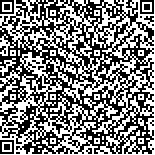|
| 引用本文: | 陈石泉,庞巧珠,蔡泽富,吴钟解,沈捷,王道儒,陈海鹰.海南黎安港海草床分布特征、健康状况及影响因素分析[J].海洋科学,2020,44(11):57-64. |
| |
|
| |
|
|
| 本文已被:浏览 1389次 下载 1066次 |

码上扫一扫! |
|
|
| 海南黎安港海草床分布特征、健康状况及影响因素分析 |
|
陈石泉1,2, 庞巧珠1,2, 蔡泽富1,2,3, 吴钟解1,2, 沈捷1,2, 王道儒1,2, 陈海鹰3
|
|
1.海南热带海洋学院热带海洋生物资源利用与保护教育部重点实验室, 海南 三亚 572022;2.海南省海洋与渔业科学院, 海南 海口 570125;3.海南大学, 海南 海口 570125
|
|
| 摘要: |
| 通过对黎安港海草资源进行调查,并采用《近岸海洋生态健康评价指南》(HY∕T087-2005)对海草床生态系统健康进行评价。结果表明,黎安港海草种类主要有2科3亚科4属4种,分别为圆叶丝粉草、泰来草、海菖蒲及卵叶喜盐草;海菖蒲分布广泛,其次为圆叶丝粉草及泰来草,海草床分布面积约为0.93 km2,黎安南岸海草分布面积最大,西岸次之,东岸最小。海草平均覆盖度为37.80%。圆叶丝粉草平均密度872.00株/m2,平均生物量150.34 g/m2,泰来草平均密度405.00株/m2,平均生物量62.45 g/m2;海菖蒲平均密度251.00株/m2,平均生物量778.50 g/m2,卵叶喜盐草平均密度6 768.00株/m2,平均生物量70.63 g/m2,2015年黎安港海草床处于健康状态;2018年处于健康状态边缘;2016年、2017年及2019年均处于亚健康状态,主要体现在沉积物环境、栖息地健康以及生物指标存在亚健康,2015年至2019年期间,黎安港海草床的健康状况总体呈现为健康转为亚健康的趋势,主要影响因素有水体交换能力较差、水产养殖活动影响、沿岸围填海工程及其他人为活动影响等。 |
| 关键词: 黎安港 海草床 分布特征 健康评价 原因分析 |
| DOI:10.11759/hykx20200426004 |
| 分类号:S913 |
| 基金项目:海南省自然基金项目(419QN254);国家重点研发计划“典型脆弱生态修复与保护研究”重点专项(2017YFC0506104);国家自然科学基金项目(41661111) |
|
| Analysis of distribution characteristics, health status, and influencing factors of seagrass bed in Li'an lagoon, Hainan Island |
|
CHEN Shi-quan1,2, PANG Qiao-zhu1,2, CAI Ze-fu1,2,3, WU Zhong-jie1,2, SHEN Jie1,2, WANG Dao-ru1,2, CHEN Hai-ying3
|
|
1.Key laboratory of Utilization and Conservation for Tropical Marine Bioresources(Hainan Tropical Ocean University), Ministry of Education, Sanya 572022, China;2.Hainan Academy of Ocean and Fisheries Sciences, Haikou 570125, China;3.Hainan University, Haikou 570125, China
|
| Abstract: |
| We investigated the sea grass resources in Li'an lagoon, Hainan Island, China and evaluated the health status of the sea grass bed ecosystem according to the Guidelines for assessment of coastal Marine ecological health (HY/t087-2005). The results showed that there were two main families, three sub-families, four genera, and four species of sea grass in Li'an lagoon including Cymodocea rotunda, Thalassia hemprichii, Enhalus acoroides, and Halophila ovalis. E. acoroides followed by T. hemprichii and C. rotunda were widely distributed. The distribution area of the sea grass bed was approximately 0.93 km2 in Li'an lagoon, with south coast followed by west coast having the largest sea grass distribution and east coast having the smallest. The average coverage of sea grass was 37.80%. The average density and biomass of C. rotunda was 87 ind/m2 and 150.34 g/m2, respectively. The average density and biomass of T. hemprichii was 405 ind/m2 and 62.45 g/m2, respectively. The average density and biomass of E. acoroides was 251 ind/m2 and 778.50 g/m2, respectively. The average density and biomass of H. ovalis was 6 768.00 ind/m2 and 70.63 g/m2, respectively. The sea grass bed of Li'an lagoon was in a healthy state in 2015, on the verge of health in 2018, and in the state of sub-health in other years. The cause of the sub-health mainly exists in the sediment environment, habitat health, and biological indicators. The health status of the sea grass beds in Li'an lagoon generally ranged from health to sub-health. The main influencing factors during 2015—2019 included poor water exchange capacity, influence of aquaculture activities, and coastal reclamation, among other activities. |
| Key words: Li'an lagoon seagrass bed distribution characteristics health evaluation influencing factors |
|
|
|
|
|
|
